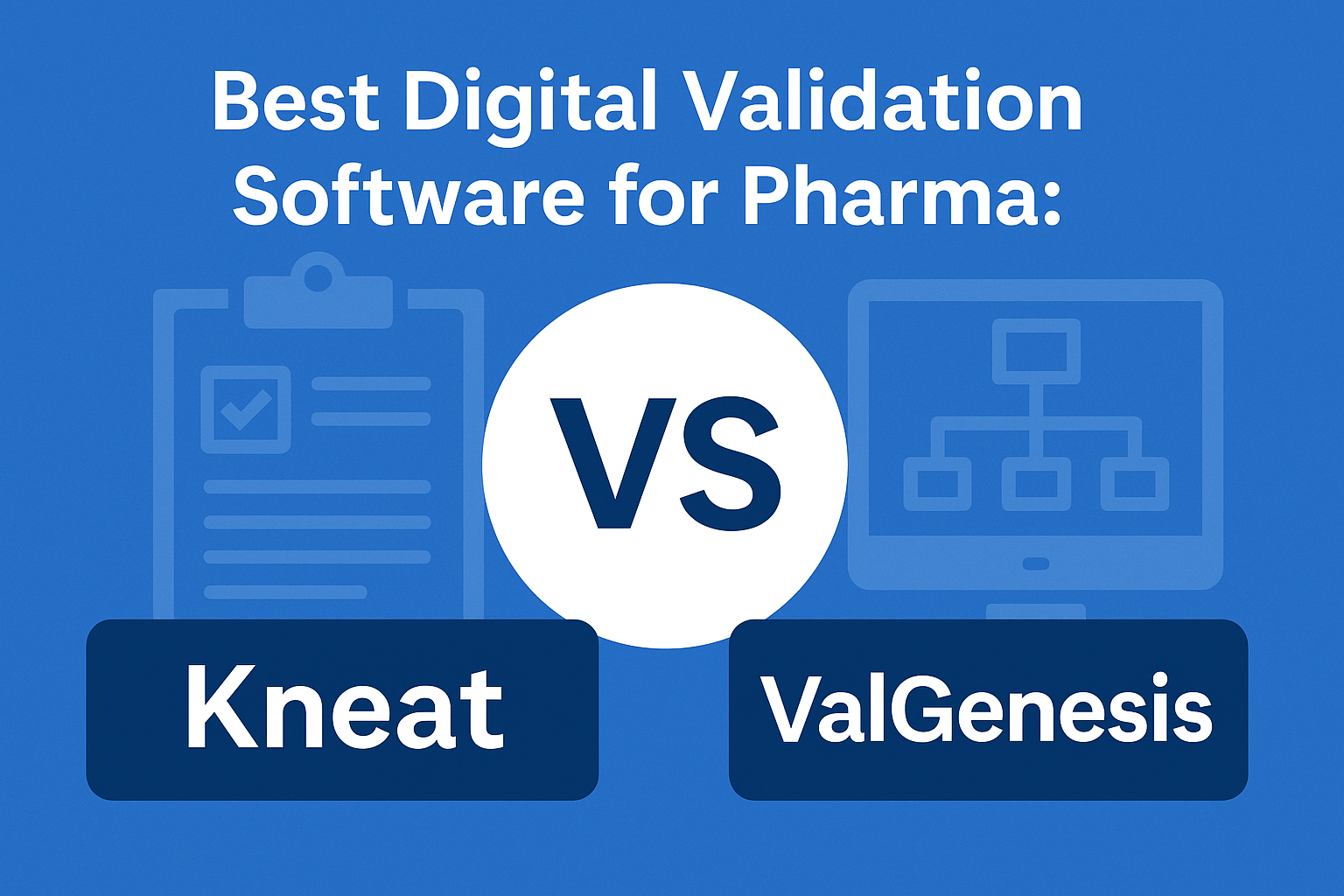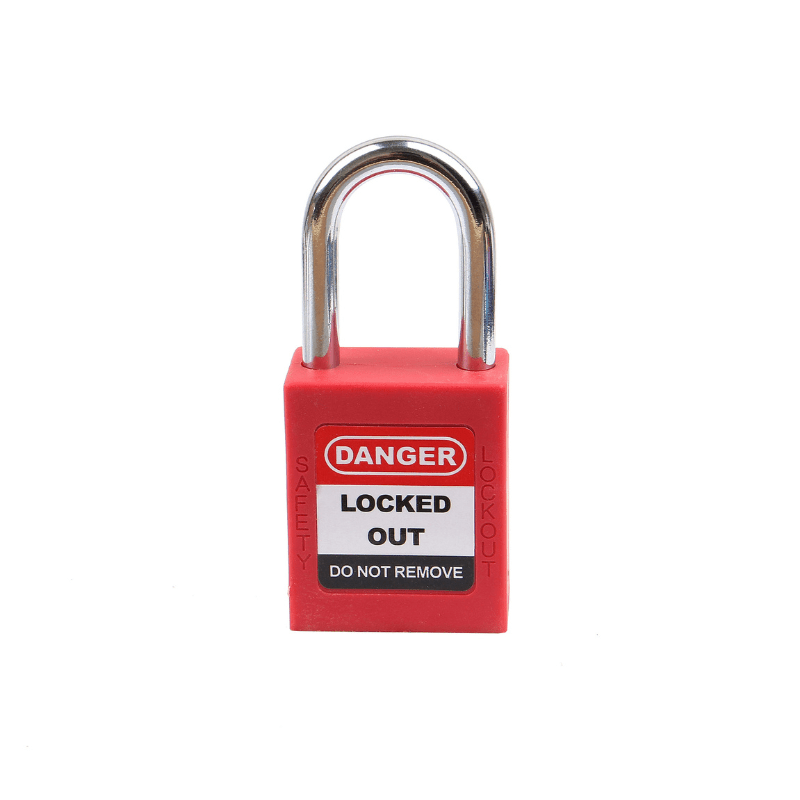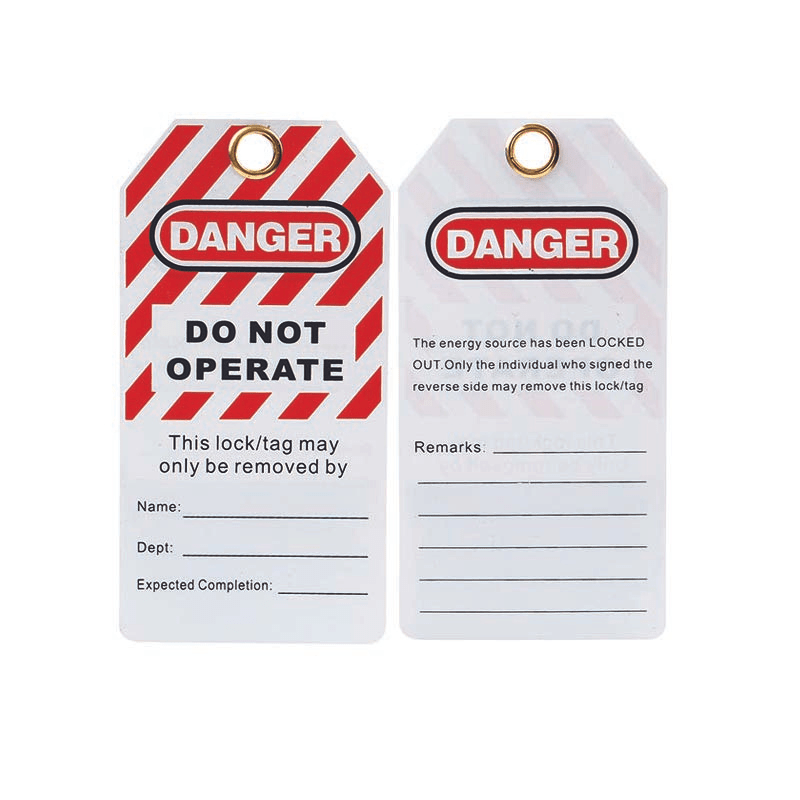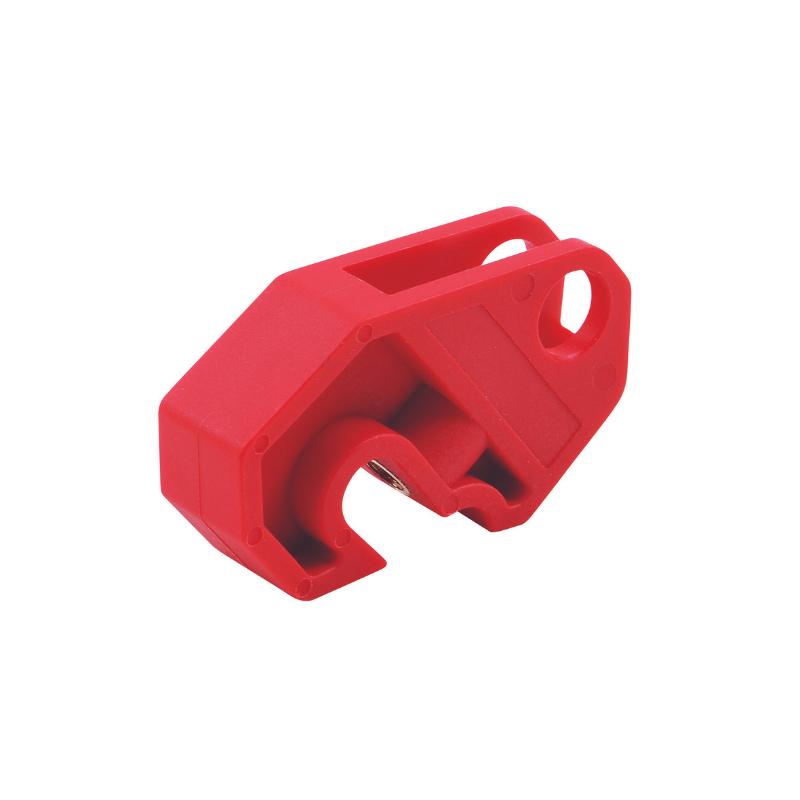Table of Contents
- Paperless Validation in Pharma: Kneat vs. ValGenesis
- The Problem with Paper: Why Change Was Needed
- Digital Solutions: Introducing Kneat Gx and ValGenesis VLMS
- Kneat Gx vs. ValGenesis VLMS: A Detailed Comparison
- Choosing the Right Platform
- Paperless Qualification and Validation: How New Systems Work
- Key Advantages: Paperless vs. Paper-Based Validation
- Challenges of Implementing Paperless Validation
- Beyond Paperless: The Intelligent Future of Validation
- Conclusion: Embracing Digital Validation
The pharmaceutical industry is rapidly digitizing its meticulous, regulated processes. For decades, validation—proving processes work as intended—has been a paper-heavy task. This critical GxP (Good Practice) activity involved excessive paperwork, manual routing, and risks of document loss or damage. Paperless validation is changing this, offering new levels of efficiency, compliance, and data integrity.
Leading this change are specialized Validation Lifecycle Management (VLM) software solutions like Kneat Solutions' Kneat Gx and ValGenesis's VLMS. This post compares these platforms for pharmaceutical use and highlights the impact of digital systems over paper-based predecessors.
The Problem with Paper: Why Change Was Needed
Traditional paper-based validation had significant drawbacks:
- Inefficiency: Manual creation, review, approval, and execution of protocols were slow, with physical document routing causing delays.
- Error-Prone: Manual data entry and review led to human errors, incorrect data, and rework.
- Compliance Risks: Adhering to 21 CFR Part 11 and Annex 11 was difficult. Audit trails, version control, and secure storage were challenging.
- High Costs: Direct costs (paper, printing, storage) were substantial, compounded by indirect costs from inefficiencies and errors.
- Poor Transparency & Traceability: Accessing specific data or tracing requirements to test cases was difficult and time-consuming.
- Collaboration Hurdles: Dispersed teams struggled with paper-based collaboration and version control.
- Environmental Impact: Large paper consumption was unsustainable.
Paperless validation directly tackles these issues with a streamlined, compliant, data-centric approach.
Digital Solutions: Introducing Kneat Gx and ValGenesis VLMS
Kneat Gx and ValGenesis VLMS digitize the entire validation lifecycle, from planning to approval. They aim to replace paper, enforce GxP compliance, and improve operational efficiency.
Kneat Gx:
Kneat Gx is a configurable, off-the-shelf platform for digitizing GxP validation and commissioning. It focuses on flexibility and ease of use, allowing companies to adapt their existing processes or use embedded best practices. Kneat manages documents, tests, exceptions, and approvals in a fully validated, 21 CFR Part 11/Annex 11 compliant environment. Its strength is managing the "document" as a central digital object.
ValGenesis VLMS:
ValGenesis VLMS is an established, comprehensive suite for managing all validation activities. It uses a robust, process-driven method, focusing on managing validation "objects" (e.g., equipment, systems) throughout their lifecycle. ValGenesis is known for enterprise-level capabilities, pre-validated templates, and strong risk management features.
Kneat Gx vs. ValGenesis VLMS: A Detailed Comparison
While both systems share a common goal, their approaches and features differ. Here’s a comparison based on key pharmaceutical industry criteria:
| Feature/Aspect | Kneat Gx | ValGenesis VLMS | Considerations for Pharma |
|---|---|---|---|
| Core Architecture & Focus | Document-centric; digitizes traditional validation documents (IQ, OQ, PQ, CSV). Highly configurable. | Object-centric; manages validation status of assets lifecycle-wide. Process-driven. | Both valid. Kneat: intuitive for paper-to-digital. ValGenesis: suits holistic asset lifecycle view. |
| User Interface (UI) & User Experience (UX) | Modern, intuitive interface. Easy to use and configure to existing workflows. | Can be seen as more traditional or complex due to extensive functionality. UI/UX improvements ongoing. | User adoption is key. Easier navigation means faster ROI. Involve end-users in evaluations. |
| Validation Types Supported | Comprehensive: IQ/OQ/PQ, PV, CV, CSV, Analytical Method Validation, etc. | Comprehensive: Similar coverage including specialized areas like Logistics Validation. | Both cover essentials. Depth for niche validation types may vary; investigate based on company needs. |
| Templating & Standardization | Dynamic template creation and management. Standardizes validation packages. | Library of pre-validated templates, customizable. Enforces standardized processes. | Standardization is vital. Kneat offers flexibility; ValGenesis offers a potentially richer template library. |
| Workflow Automation & Collaboration | Robust workflow engine for reviews, approvals, execution. Real-time collaboration. | Strong workflow capabilities, granular role/permission control. Supports parallel/sequential reviews. | Digital workflows cut cycle times. E-signatures, notifications, concurrent access are crucial. Ease of workflow adaptation may differ. |
| Regulatory Compliance (21 CFR Part 11, Annex 11, GxP) | Built for 21 CFR Part 11/Annex 11 compliance. Secure e-signatures, audit trails, data integrity controls. | Long-standing compliance focus. Robust e-signatures, audit trails, version control, data security. | Non-negotiable. Both meet requirements. Scrutinize vendor's validation and QMS. |
| Integration Capabilities | APIs for integration with QMS, ERP, LIMS, DMS. | Integrates with various enterprise systems for a connected GxP landscape. | Integration avoids data silos. Ease and cost of integrating with systems like SAP, TrackWise, Veeva are critical. |
| Reporting & Analytics | Powerful reporting for progress tracking, bottleneck identification, summary reports. Customizable dashboards. | Extensive reporting and analytics for trend analysis, compliance dashboards, management oversight. | Real-time visibility is a major benefit. Customizable reports and ad-hoc queries aid continuous improvement. |
| Scalability & Deployment | Cloud-based (SaaS), scalable for global enterprises and smaller companies. | Cloud (SaaS) and on-premise options. Scalable for large, multi-site organizations. | Scalability and flexible deployment are essential. Cloud preferred for lower overhead. Consider data residency. |
| Deviation & CAPA Management | Manages deviations within validation. Integrates with external CAPA systems. | Modules or strong integrations for deviations, linking to CAPA processes. | Streamlined deviation handling is crucial. Integrated CAPA ensures a closed-loop quality process. |
| Vendor Support & Community | Growing customer base, active support. Focus on customer success. | Established vendor, large global user base. Extensive support, training, user communities. | Strong vendor support and community aid implementation. Vendor's pharma validation expertise is key. |
| Validation of the System Itself | Provides validation accelerator packs (VAPs) and support for customer validation. | Offers comprehensive validation documentation and services for VLMS validation. | "Validating the validator" is crucial. Both provide resources; assess customer effort. |
Choosing the Right Platform
The best system depends on your company's specific needs, infrastructure, maturity, and strategy.
Consider Kneat Gx if:
- You want an intuitive, modern UI and easy configuration.
- Your goal is efficiently digitizing document-centric validation processes.
- You need a flexible platform adaptable to various GxP processes.
- You prefer a rapidly evolving cloud-native solution.
Consider ValGenesis VLMS if:
- You need a mature, enterprise-wide system with a long pharma track record.
- Your focus is an object-oriented, lifecycle approach to asset validation.
- You require extensive pre-validated templates or on-premise options.
- You value deep integrations and a broad, established feature set.
Conduct thorough vendor evaluations: request live demos for your use cases, consider pilot programs, and check references with current pharmaceutical clients.
Paperless Qualification and Validation: How New Systems Work
Digital systems dramatically change the qualification and validation (Q&V) lifecycle compared to paper methods.
1. Design Qualification (DQ):
Paper-Based: Specifications (URS, FS, DS) were often siloed. Traceability matrices were manual and error-prone.
Paperless: Digital, linked, version-controlled requirements. Automated, dynamic traceability. Streamlined review/approval with e-signatures. Ensures design meets user needs.
2. Installation Qualification (IQ):
Paper-Based: IQ protocols involved manual checklists, physical evidence attachment, and wet signatures.
Paperless: IQ protocols executed on devices. Evidence (photos, scans) electronically attached. E-workflows and e-signatures for reviews/approvals. Real-time status updates.
3. Operational Qualification (OQ):
Paper-Based: Manual test script execution. Handwritten results. Manual deviation logging and approval.
Paperless: OQ tests executed electronically. Results captured directly, with automated calculations. Deviations logged digitally, triggering workflows. Real-time progress visibility for faster reviews.
4. Performance Qualification (PQ) & Process Validation (PV):
Paper-Based: Managing batch records, samples, and large datasets was a logistical challenge. Manual report compilation caused delays.
Paperless: Protocols guide PQ/PV execution. Data captured directly or integrated (LIMS, MES). Faster report generation using approved system data. Continuous process verification is more feasible.
5. Computer System Validation (CSV):
Paper-Based: Complex, document-heavy management of requirements, risk assessments, test scripts, traceability, and change control.
Paperless: Dedicated environment for all CSV deliverables. Traceability from requirements to reports. Manages test execution, defect tracking, and e-signatures. Simplifies periodic review.
Key Advantages: Paperless vs. Paper-Based Validation
| Aspect | Paper-Based Validation | Paperless Validation (e.g., Kneat, ValGenesis) |
|---|---|---|
| Efficiency & Speed | Slow, manual, causing delays and long cycle times. | Automated workflows, e-signatures. Reduced cycle times (often 50%+). Real-time tracking. |
| Data Integrity & Accuracy | High risk of errors, lost data, illegible entries. | Enforced data formats, secure capture. Audit trails ensure ALCOA+ principles. |
| Compliance & Audit Readiness | Difficult audit trail maintenance, version control. Time-consuming audit prep. | Built-in 21 CFR Part 11/Annex 11 compliance. Comprehensive audit trails. Secure e-signatures. Instant record access. |
| Cost | High direct and indirect costs from paper and inefficiencies. | Subscription/implementation costs offset by long-term savings from efficiency and error reduction. |
| Collaboration & Transparency | Difficult for dispersed teams. Lack of real-time visibility. | Centralized platform for global team collaboration. Real-time dashboards for full transparency. |
| Risk Management | Often ad-hoc, poorly documented risk mitigation. | Integrated risk tools. Systematic deviation capture, linking to CAPA. Proactive risk mitigation. |
| Scalability | Resource-intensive and cumbersome to scale. | Easily scales for more projects, users, and sites without proportional paper increase. |
| Environmental Impact | Significant paper consumption and waste. | Drastically reduces paper, supporting sustainability. |
| Traceability | Manual, error-prone traceability matrices. | Automated, dynamic traceability. Clear links between requirements, risks, tests, results, and reports. |
Challenges of Implementing Paperless Validation
Transitioning to paperless validation has challenges:
- Initial Investment: Costs for software, services, and potential hardware.
- Change Management: Overcoming resistance and ensuring user adoption needs training, communication, and leadership support.
- Data Migration: Migrating historical data can be complex; a clear strategy is vital.
- System Validation: The paperless system itself must be validated for its intended use.
- Vendor Selection: Choosing the right vendor and platform is crucial.
- Integration: Integrating with other enterprise systems (QMS, ERP, LIMS) can be technically challenging but offers significant value.
- Process Re-engineering: Optimize processes, don't just digitize inefficient ones.
Beyond Paperless: The Intelligent Future of Validation
Paperless validation is the start. Future advancements include:
- AI and Machine Learning: For risk assessment, protocol generation, anomaly detection, and predictive compliance.
- Big Data Analytics: Insights from validation data for process optimization and proactive quality management.
- Continuous Validation: Using real-time data to maintain a continuous validated state.
- Further Integration: Deeper integration across the GxP ecosystem for a unified digital landscape.
Conclusion: Embracing Digital Validation
The pharma industry is moving from paper to efficient, compliant, data-driven paperless validation. Kneat Gx and ValGenesis lead this shift, addressing traditional inefficiencies and risks. Both improve cycle times, data integrity, compliance, and operational excellence.
This transition needs planning, investment, and change management. The rewards are clear: better quality, lower risk, faster market entry, and more agility. For pharma companies, paperless validation is a strategic necessity. The digital future of validation is here.
Need Expert Advice on Lockout Tagout?
Lockout Tagout (LOTO) is crucial for workplace safety, but it can be complex to implement correctly. Whether you need guidance on the best practices, training requirements, or selecting the right lockout devices, The Lock Box is here to help.
Our team of LOTO experts is ready to answer your questions and provide tailored solutions for your facility.
Contact us today at hello@thelockbox.ch – let’s ensure your workplace is safe and compliant!




1 comment
We would love you to see Sware’s Resq platform that leapfrogs both Kneat and Valgenesis.
Let us know how we can education you. Ellen